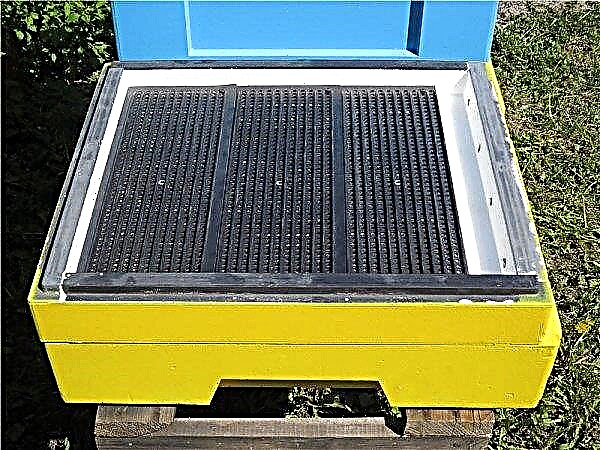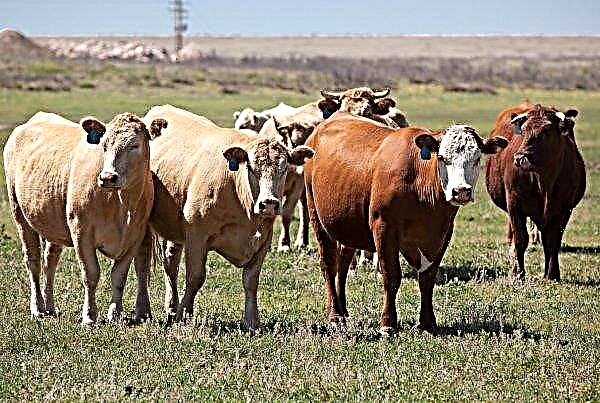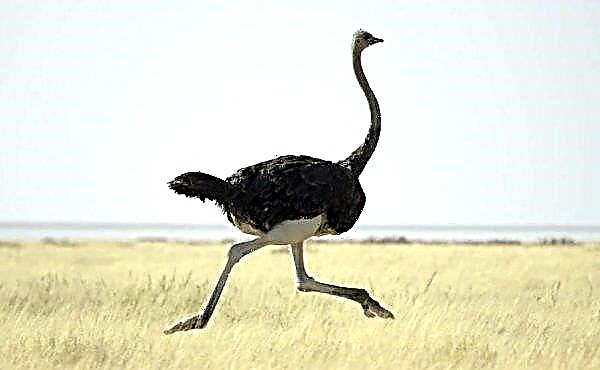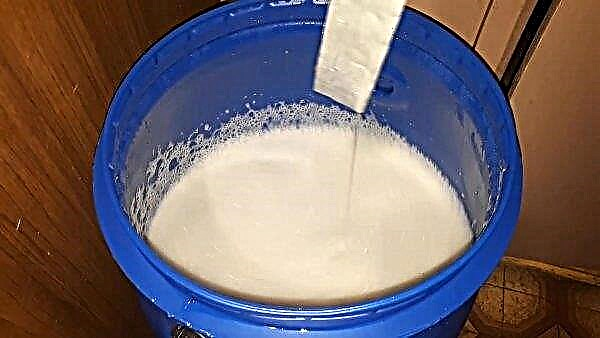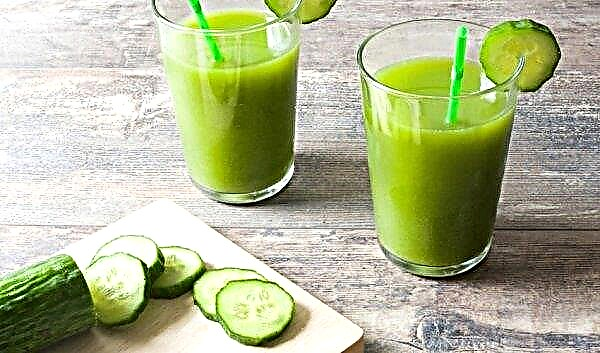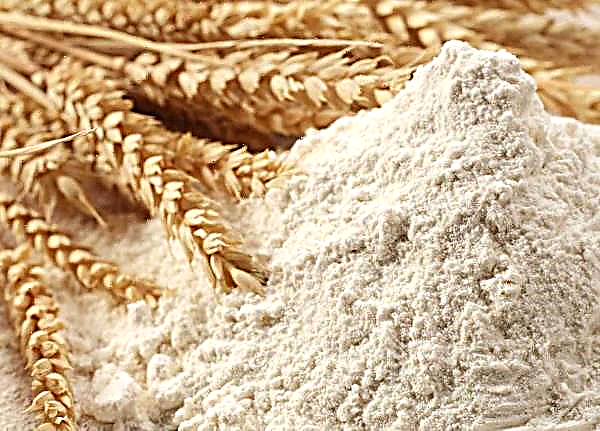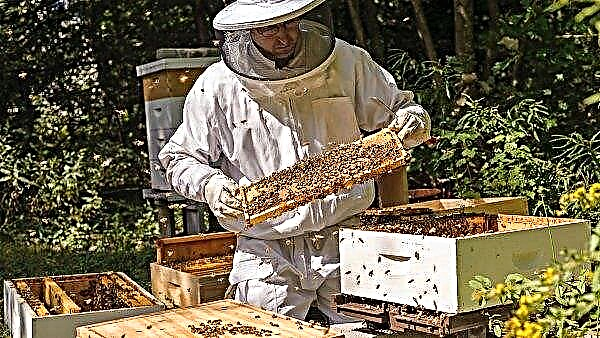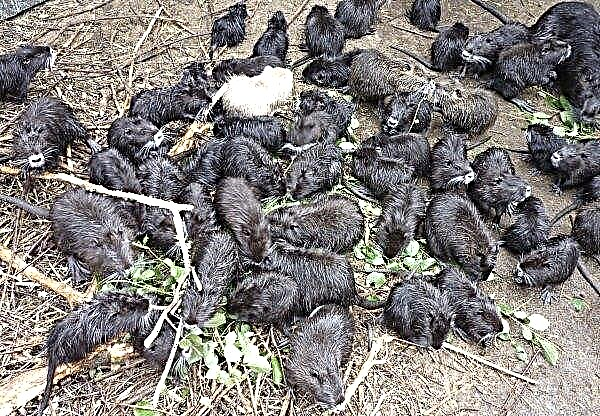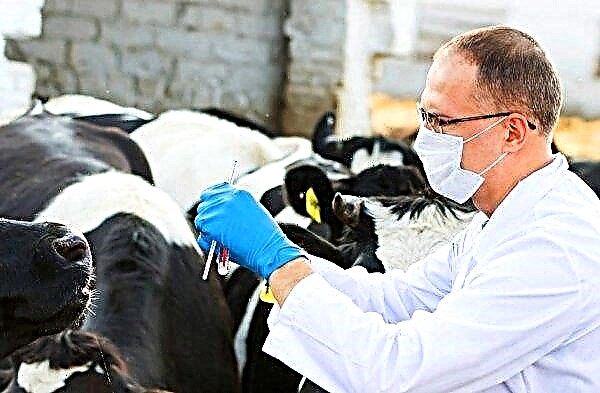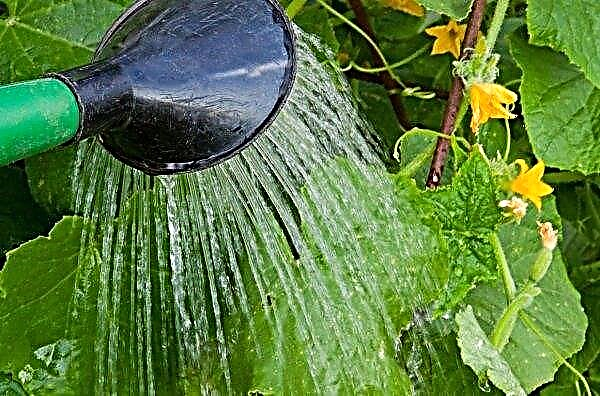It is not for nothing that potatoes are called second bread, because in our latitudes it is customary to eat it almost every day. That is why many farmers and gardeners have an important question - how to propagate it properly, because the future crop will depend on the quantity and quality of the seed. Let's look at the different ways of propagating potatoes and find out how they differ from each other.
The botanical characteristics of potatoes
Potato, or tuberous nightshade, is a perennial tuberous herbaceous plant in the nightshade family.
Important! The vegetative parts of the potato contain the alkaloid solanine, which serves to protect against certain bacteria and pests. Green root crops also contain this poison, so it is better not to use them or cut the peel to a depth of at least 1 cm and subjected to prolonged heat treatment.
Only his tubers are eaten. Like all solanaceous, potatoes are pollinated independently. Plant characteristics:
Plant characteristics:
- average bush height - up to 1 m;
- the length of one shoot is 15-50 cm;
- stem - green, smooth, ribbed;
- leaves - dark green, intermittently-pinnate dissected;
- flowers - white-pink or with a purple tint, sitting on the top of the shoot;
- fruits - dark green, multi-seeded, poisonous berries about 2 cm in size;
- tubers - swollen buds on the underground part of the stem;
- tuber flesh - dense, starchy, white, cream or yellowish;
- tuber peel - a thin layer of cork;
- tubers ripening period - August-September.
The main methods of reproduction
Potatoes can be propagated in several ways - sprouts, tubers, layering, cuttings, seeds and meristems. Consider each of the methods in more detail.
Sprout propagation
This method is often used for rare varieties of root crops when there is not enough material to plant. Germinating sprouts in a moistened substrate, you can immediately get ready seedlings for planting in a permanent place.
Reproduction occurs as follows:
- Strong sprouts, reaching a length of 5-6 cm, are separated from the tubers.
- With an insufficient number of sprouts, they should be cut into parts with 1-2 kidneys.
- Sprouts are planted in seedling boxes or paper cups so that their third part protrudes above the surface of the soil.
- Tanks are placed in a warm, lit place under cover with a film or glass.
- As necessary, water, fertilize and loosen the soil.
- After 3-4 weeks, the plants are planted in a permanent place.
 Propagation by sprouts allows 4–5 lots of seed material to be grown from the same potatoes per season, since new sprouts form later on in place of the cut ones.
Propagation by sprouts allows 4–5 lots of seed material to be grown from the same potatoes per season, since new sprouts form later on in place of the cut ones.- Advantages of the method:
- the ability to use excessively long sprouts, cutting them into cuttings;
- minimum tuber consumption per planting: up to 40 sprouts can be grown from one potato.
- The disadvantages of the method:
- the need for frequent watering and top dressing;
- the likelihood of bacteria and fungi remaining on the sprouts;
- a small number of tubers from one sprout - up to 5.
Tuber division
This method is also often used to increase planting material, as large tubers used for food are also suitable for it. On the average potato there are 6–10 ocelli, but only apicals develop well. But if you remove them, then the rest begin to "wake up." Reproduction occurs as follows:
Reproduction occurs as follows:
- About 30 days before planting on the site, the potatoes are transferred from the cellar or basement to a lighted and warm place.
- After 3 weeks, the apical eyes with part of the pulp are carefully cut.
- Eyes are placed in containers with soil for seedlings or wet sawdust to a depth of 1 cm.
- When the soil dries, irrigate with warm, settled water.
- The remaining tubers are dipped in slices into a dry soil mixture and laid out slices up to germinate the remaining eyes.
- After a week, the tops with roots are removed and planted in a permanent place.
- Sprouted tubers are divided into parts with eyes and planted in the holes to a depth of about 8 cm in increments of 25-30 cm and a width between rows of 50-60 cm.
Important! Cut root vegetables into the eyes should be no later than 5 days before planting, so that the surface has time to tighten, and the eyes begin to develop and form shoots.
- Advantages of the method:
- often only the upper part is taken for landing, the rest can be used as food;
- you can even take large potatoes;
- cutting the apex eyes awakens the rest and makes it possible to use them for reproduction.
- The disadvantages of the method:
- fungi and viruses can be transmitted;
- the part lacking in nutrition with the eye needs enhanced care;
- from one eye no more than 5 tubers ripen.
Propagation by layering
With this method, the sprouts do not cut from the tuber, but remain on it until the seedlings are ready. Reproduction occurs as follows:
Reproduction occurs as follows:
- Quality tubers germinate in a lighted place for about 20-30 days.
- They are placed in boxes with light soil or peat at a distance of 2-3 cm from each other, deepened by 4-6 cm and watered abundantly with clean, settled water.
- Boxes are placed in a warm, well-lit room or greenhouse, seedlings appear on 8–9 days.
- About a month after planting, sprouts 5–8 cm high are separated from the old tuber along with the ground.
- Parent tubers are again covered with soil to form fresh layers.
Some gardeners prefer to use this method directly on the beds, but then much less material is obtained for planting.
- Advantages of the method:
- the use of tubers of any size;
- the possibility of obtaining a significant number of plants.
- The disadvantages of the method:
- high probability of spread of infection by fungi or bacteria;
- labor input.
Did you know? According to one version, potatoes appeared in Europe in 1580 thanks to the monk Jerome Cardan. However, Europeans began to eat it only from the end of the XVIII century. Until that time, they considered root crops poisonous and even causing leprosy.
Cuttings
This technology is used for potatoes that have been planted in the usual way. Such plants can no longer be divided into sprouts and eyes, so they are propagated after flowering. Potato propagates as follows:
Potato propagates as follows:
- When all the flowers have opened on the bushes, several side shoots are carefully cut from them.
- The tops are removed and cut into cuttings consisting of a part of the stem, leaf and bud in its sinus.
- Cuttings are disinfected in a solution of potassium permanganate or in any antibacterial agent.
- Cuttings are placed in boxes with clean soil so that the stem lies horizontally and the leaf vertically.
- Cuttings 1 cm sprinkled with soil, while the leaves should be on the surface.
- Boxes are placed in a warm and bright place, the soil is constantly moistened, preventing drying out.
- About a month later, small nodules appear, which are removed for storage until planting.
- Advantages of the method:
- subject to technology, bacteria and fungi are not tolerated;
- the possibility of growing in boxes or pots;
- low labor costs.
- The disadvantages of the method:
- the inability to pre-evaluate the yield of the bush selected for propagation;
- the need for frequent moistening of the soil with cuttings;
- the stalk brings one small tuber, a good yield is possible only after a year.
One of the varieties of cuttings is microclonal propagation of root crops. This method allows you to get virus-free plants and in the future to grow healthy planting material. It consists in growing potatoes at a high temperature, after which the apical buds (meristems) are placed in a nutrient medium in glass containers (in vitro) in a special laboratory.
After the appearance of sprouts, they are planted in a greenhouse or in a special area protected from pests. As a result, tubers appear that are smaller than usual. These "micro-tubers" are stored at low temperatures and after 1.5 months can be placed in a warm place for six months to activate germination.
Did you know? Potato chips were invented in 1853 by the cook of the American restaurant George Crum, when, in response to a complaint from a visitor about too thick french fries, he cut the potatoes as thinly as he could. Chips later became the signature dish of this restaurant.
Seeds
The method of propagation by seeds is one of the rarest and is mainly used for valuable, elite plant varieties. Moreover, this method guarantees the absence of transmission of infection from last year's material. Reproduction occurs as follows:
Reproduction occurs as follows:
- From an untouched strong bush, plants in the fall collect seeds enclosed in green berries.
- Seeds are extracted from berries, dried in a natural way and stored in a dry and cool place.
- In late winter or early spring, seeds are sown in prepared boxes with clean soil for seedlings.
- The containers are left in a warm and well-lit place, the soil is periodically watered, the plants dive and feed, and if necessary, organize additional lighting.
- After 1.5–2 weeks, the first shoots appear, after about 6 weeks they are transplanted into the ground.
The advantages of the method include the possibility of obtaining an elite, healthy material for planting.
- The disadvantages of the method:
- insufficient root crops in the first year of development;
- high labor costs.
Features of combining breeding methods
The combination of different methods of reproduction allows you to use their advantages and increase the volume of seeds by almost 10 times.
The combination is carried out in this way:- The tubers are propagated by sprouts, which are then cut and planted.
- The potato is divided into parts so that each one has one eye, after which the pieces are planted in the prepared soil.
- When the potato bush reaches a height of 15–20 cm, use the method of dividing the bush.
- At the end of flowering, propagation by cuttings is carried out.
 Existing methods of propagation of potatoes can increase the volume of seed material, and some also guarantee the receipt of clean, not infected planting tubers. Despite the chosen method of propagating potatoes, the key to success is healthy parent plants and compliance with all the rules of planting and care.
Existing methods of propagation of potatoes can increase the volume of seed material, and some also guarantee the receipt of clean, not infected planting tubers. Despite the chosen method of propagating potatoes, the key to success is healthy parent plants and compliance with all the rules of planting and care.

